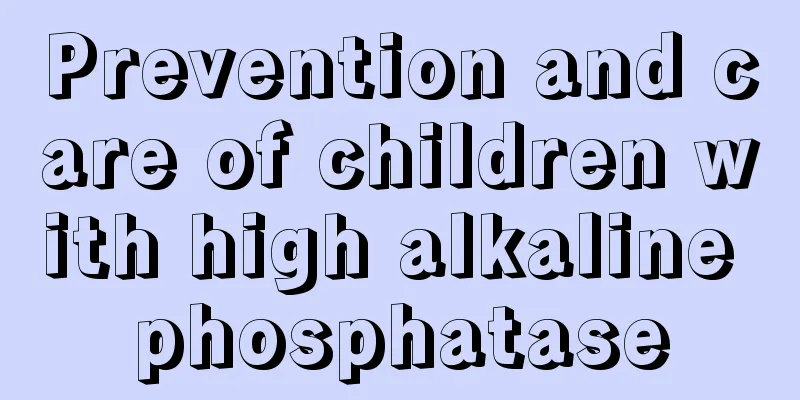What causes high C-reactive protein in children?

|
As we all know, there are various elements in our body, so in clinical diagnosis, whether these elements are higher or lower than the standard value is often used as the main basis for diagnosing the disease. For example, some parents take their children to the hospital for examination, and the doctor tells them that the child’s C-reactive protein is high, so the parents express their incomprehension. So, why do children have high C-reactive protein levels? Let’s take a look at the reasons below. Many people have found that whether it is adults or children, there is often a test item called C-reactive protein in routine blood tests or biochemical tests, but most people do not know what C-reactive protein is and what is the significance of testing it? Zhang Kui, director of the laboratory department of Nanjing Drum Tower Hospital, introduced that C-reactive protein (C-neactveprotein, abbreviated as CRP, hereinafter referred to as CRP). More than 80 years ago, two foreign scholars discovered that a change would occur in the bodies of some patients infected with bacteria. The C polysaccharide on the bacterial cell wall would react with the protein in the patient's serum to form a precipitation reaction visible to the naked eye. This protein in human serum is now called C-reactive protein. It was later discovered that C-reactive protein would change in the human body regardless of severe bacterial infection, burns, surgical trauma, or various inflammations. Therefore, the clinical significance of CRP test value is mainly: it can tell at a glance whether it is bacteria or virus. C-reactive protein can first help to identify whether there is inflammation in the body. C-reactive protein can increase rapidly within a few hours after the onset of various acute inflammations, tissue damage, surgical trauma, radiation damage, etc., and has the tendency to increase exponentially. When the lesion improves, it quickly returns to normal, and the degree of increase is positively correlated with the degree of infection. Therefore, CRP is considered to be one of the most important and sensitive markers of the human body's acute inflammatory response. CRP is correlated with other inflammatory factors such as total white blood cell count, erythrocyte sedimentation rate and polymorphonuclear leukocytes, especially with the total white blood cell count. Secondly, it can help identify the type of respiratory infection. CRP can be used for differential diagnosis of bacterial and viral infections: in bacterial infections, CRP levels increase; in viral infections, CRP does not increase or increases slightly. Therefore, CRP values can help doctors identify the type of respiratory infection and give targeted medications and treatments. In addition, C-reactive protein can also be used for rapid diagnosis of diseases such as sepsis. CRP levels in the body increase rapidly during sepsis, but blood culture may take at least 48 hours to detect. The CRP level in the body can also increase rapidly in bacterial meningitis, but the increase is not obvious in other types of meningitis. It is worth reminding that this indicator can also serve as a warning for malignant tumors. For example, most patients with malignant tumors have elevated CRP. For example, the combined detection of CRP and AFP can be used for the differential diagnosis of liver cancer and benign liver diseases. CRP determination has positive significance in the treatment and prognosis of tumors. CRP increases before surgery and decreases after surgery, and its response is not affected by radiotherapy, chemotherapy, and corticosteroid treatment, which helps clinically evaluate the progression of the tumor. |
<<: What causes pain near a child’s belly button?
>>: First aid measures for children with fever in the middle of the night
Recommend
Is it okay for children to wear socks when sleeping?
Parents are very concerned about their children&#...
What should I do if my child’s skin is broken and becomes inflamed? Should he take anti-inflammatory drugs?
Children are particularly naughty, so some of the...
Two-year-old baby doesn't like to eat
There is a two-year-old baby at home who doesn’t ...
What should I do if my five-month-old baby has a fever while teething?
Babies usually start to grow teeth when they are ...
What should I do if my baby has a sore throat?
Babies' physical constitution is relatively p...
What should I do if my child is allergic to tetanus?
If a child has a wound on his body, it is necessa...
Three-month-old baby cannot lift his head
The developmental problems of newborns make paren...
Home prevention and treatment of mycoplasma infection in children
Children have weaker resistance and are most vuln...
Symptoms of autism in children
Childhood autism is actually not uncommon in life...
What does a one month old baby's stool look like?
Right after the baby is born, because the baby ca...
Why does my baby sleep with his mouth open?
Every child is an important and protected person ...
What to do if your baby is irritable due to teething?
Many parents will find that their babies are alwa...
How to educate children in rebellious period
The most headaches for parents are when their chi...
Why do children's palms sweat?
Although sweaty palms in children are very common...
What to do if your child's fingers peel
The physical health of children is one of the mos...









